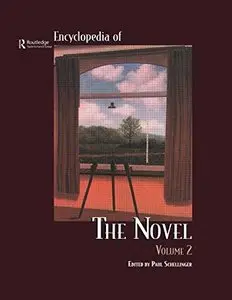Encyclopedia of the Novel (Volume 2) By Paul Schellinger
1999 | 838 Pages | ISBN: 1579580157 | PDF | 75 MB
1999 | 838 Pages | ISBN: 1579580157 | PDF | 75 MB
It takes an encyclopedia to fully capture and track the twists and turns that the novel has taken on its road to becoming the most popular literary form. Imagine a two-volume, crisply written, elegantly framed source that is truly encyclopedic, and you have an understanding of much of what has been accomplished here. Strikingly enough, a quick scan of the literature points up that there has been little published to compare with this book for some time. Presented here, in language packed with meaning and of a clarity that makes the book accessible to scholars and lay readers alike, are some 650 very satisfactory essays. There are entries not only on classic novels and great novel writers but also, as the editor says, "types of novels, on technical and formal aspects of novels," as well as criticism, theory, and influences. Because the work's stated intent is to emphasize the novel as genre, many writers are treated as integral parts of larger entities. Entries for individual authors, including Chinua Achebe, Henry Fielding, Carlos Fuentes, Thomas Hardy, and Virginia Woolf, discuss lives and works, but more space is given to explaining the writer's role in the development of the genre. The hard choices as to which individual authors and books should be given their own entries were of course made by the editor, with the help of about 20 advisors, all associated with distinguished academic institutions here and abroad. The larger entries are thematic, for example, adventure novel and imperial romance Caribbean novel English novel magic realism tense in narrative. Though most of the contributors and advisors are affiliated with universities of North America, Britain, and Australia, the development of the genre in the rest of the world is given its due (African novel, Chinese novel, Southeast Asian novel, and others). A look at the notes on the contributors shows them to be very well qualified, with positions in higher education as professors of English or other languages and usually with numerous books and articles to their credit. Their essays range in length from one full large-format two-column page to four or five pages. Material is presented in alphabetical order, and finding information is made easier by the use of appropriate see references. Entries contain see also references to related entries, lists of further reading, and in the case of authors, lists of novels and a brief biographical summary. Some longer entries are subdivided by time periods. The set concludes with title and general indexes. The title index contains all titles mentioned in the encyclopedia, even those listed in the "novels by" section of individual writer entries but not actually discussed. A bibliography of seven pages (approximately 200 reference books in English or in translation from other languages) is divided into three parts: "General Sources for Research" "Historical and Genre-Based Criticism, Narratology and Other Theoretical Approaches to the Novel" and "The Novel in Its Regional Contexts" (subdivided geographically). Among the sources listed are such scholarly seminal works as E. M. Forster's Aspects of the Novel (Harcourt, 1927), The Cambridge History of Italian Literature (Cambridge, 1996), and Ian Watt's The Rise of the Novel (Univ. of California, 1957). Encyclopedia of the Novel will help students, professors, and the avid reader to identify, evaluate, appraise, and perhaps enjoy the defining writers, novels, and themes. This work is a felicitous melding of the interests of the novel-reading multitudes and the critics who analyze the genre. Its acquisition should be a high priority for academic and large public libraries.



